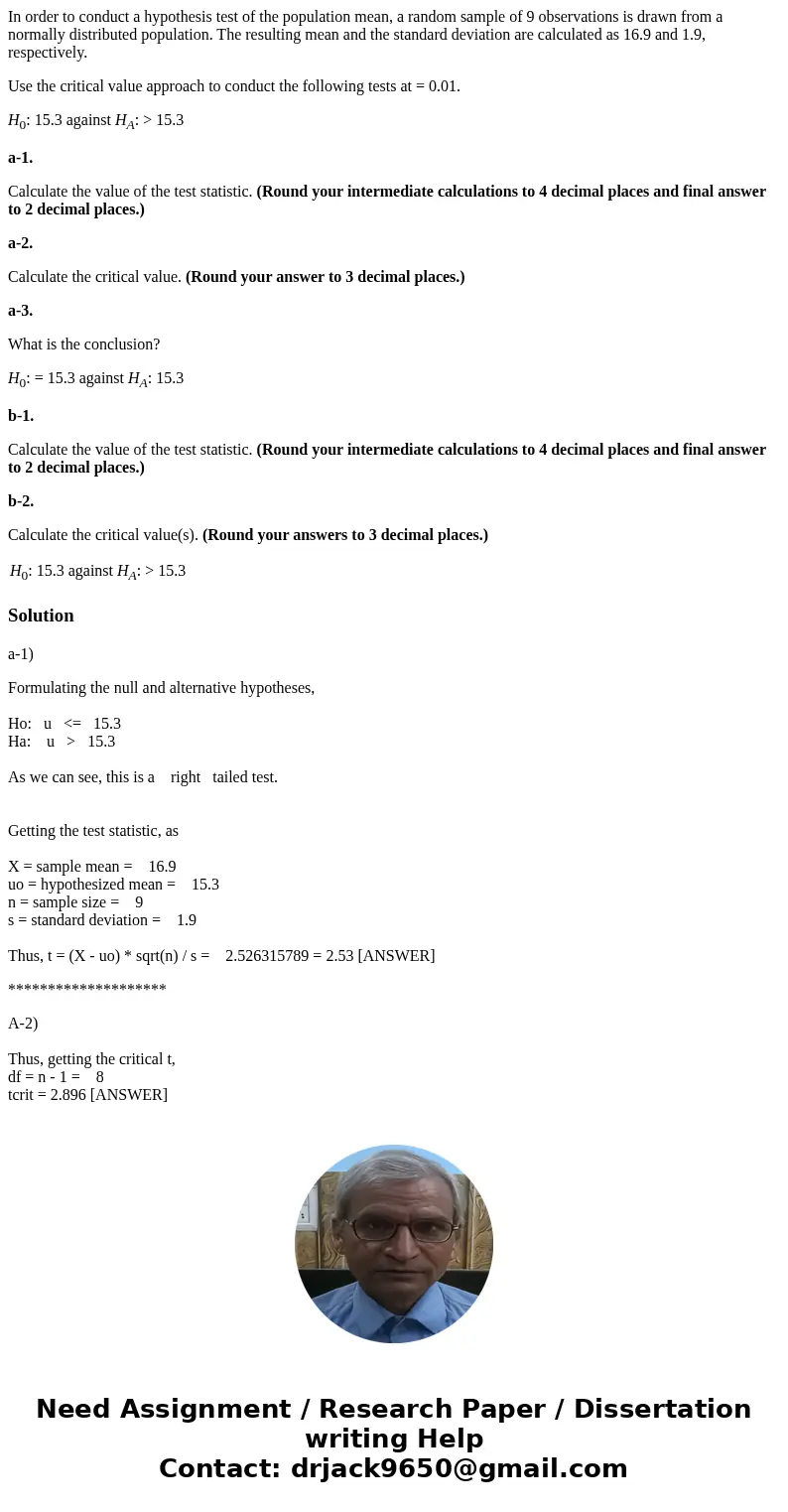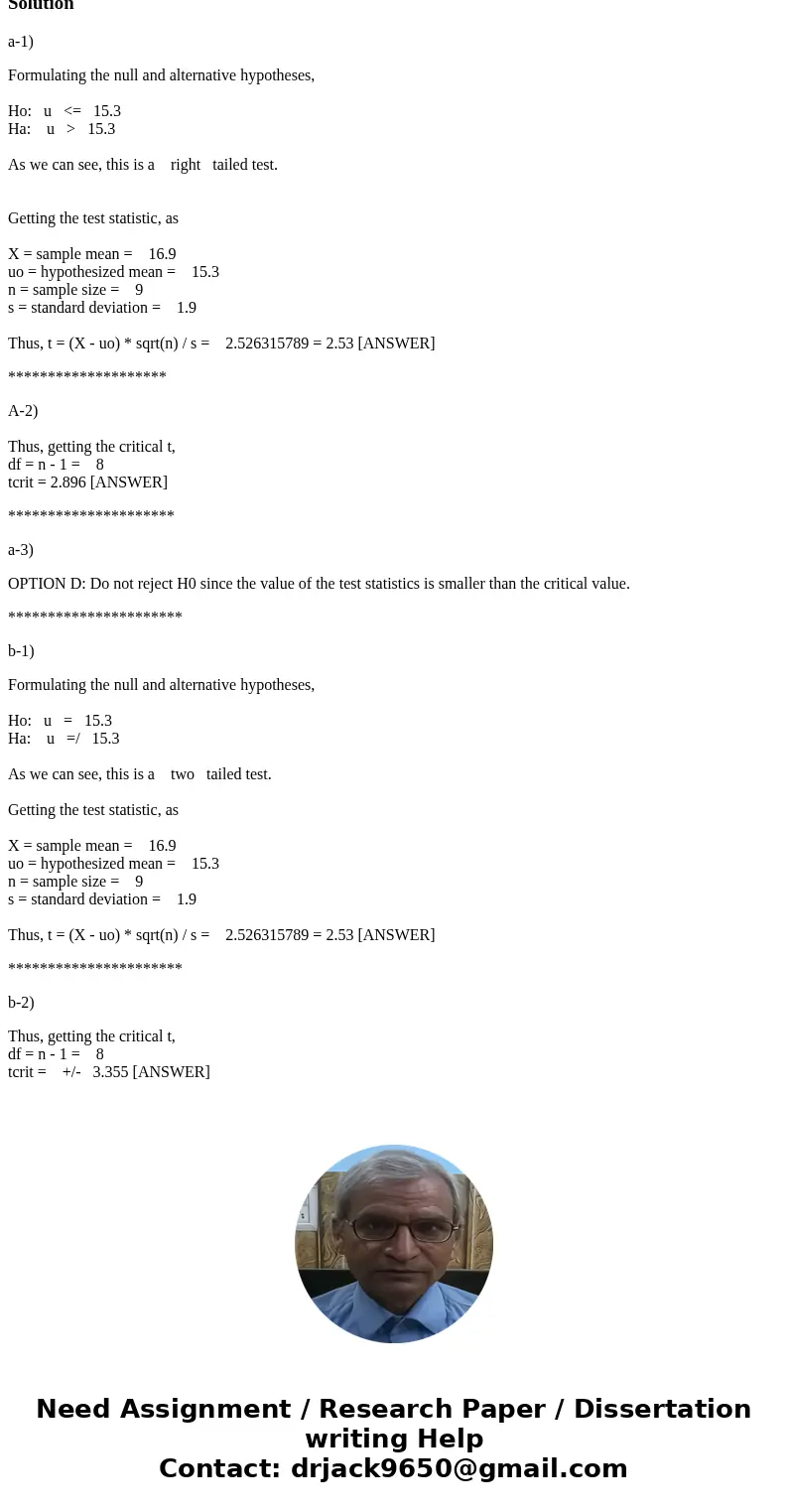In order to conduct a hypothesis test of the population mean
In order to conduct a hypothesis test of the population mean, a random sample of 9 observations is drawn from a normally distributed population. The resulting mean and the standard deviation are calculated as 16.9 and 1.9, respectively.
Use the critical value approach to conduct the following tests at = 0.01.
H0: 15.3 against HA: > 15.3
a-1.
Calculate the value of the test statistic. (Round your intermediate calculations to 4 decimal places and final answer to 2 decimal places.)
a-2.
Calculate the critical value. (Round your answer to 3 decimal places.)
a-3.
What is the conclusion?
H0: = 15.3 against HA: 15.3
b-1.
Calculate the value of the test statistic. (Round your intermediate calculations to 4 decimal places and final answer to 2 decimal places.)
b-2.
Calculate the critical value(s). (Round your answers to 3 decimal places.)
| H0: 15.3 against HA: > 15.3 |
Solution
a-1)
Formulating the null and alternative hypotheses,
Ho: u <= 15.3
Ha: u > 15.3
As we can see, this is a right tailed test.
Getting the test statistic, as
X = sample mean = 16.9
uo = hypothesized mean = 15.3
n = sample size = 9
s = standard deviation = 1.9
Thus, t = (X - uo) * sqrt(n) / s = 2.526315789 = 2.53 [ANSWER]
********************
A-2)
Thus, getting the critical t,
df = n - 1 = 8
tcrit = 2.896 [ANSWER]
*********************
a-3)
OPTION D: Do not reject H0 since the value of the test statistics is smaller than the critical value.
**********************
b-1)
Formulating the null and alternative hypotheses,
Ho: u = 15.3
Ha: u =/ 15.3
As we can see, this is a two tailed test.
Getting the test statistic, as
X = sample mean = 16.9
uo = hypothesized mean = 15.3
n = sample size = 9
s = standard deviation = 1.9
Thus, t = (X - uo) * sqrt(n) / s = 2.526315789 = 2.53 [ANSWER]
**********************
b-2)
Thus, getting the critical t,
df = n - 1 = 8
tcrit = +/- 3.355 [ANSWER]


 Homework Sourse
Homework Sourse